Top 15 Tips to Keep Kids Focused During Online Science Learning
Top 15 Tips to Keep Kids Focused During Online Science Learning
Wi-Fi strong, focus weak?📶 Umm..yep concentration and focus of kids nowadays are not the same as earlier it used to be since th introduction ofe online education era. Even with the fastest internet, keeping kids engaged in an online science lesson can feel like buffering in real life. But with these 15 expert tips, you’ll turn those "lagging" moments into lively learning experiences!
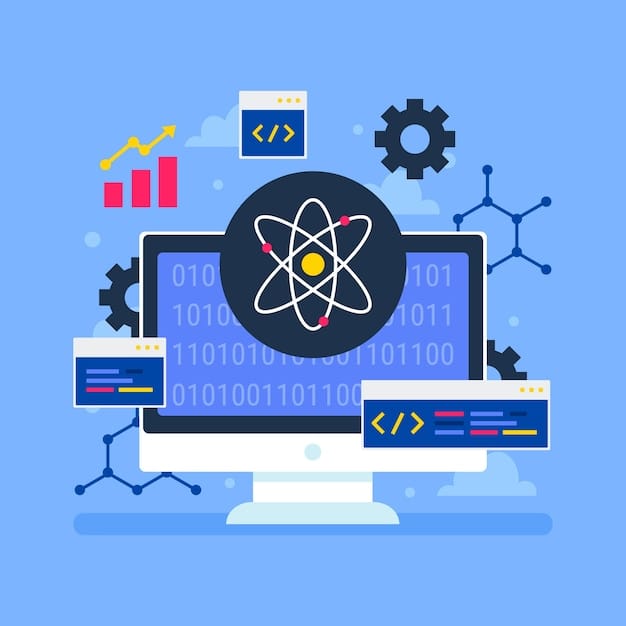
Maintaining focus can be challenging for kids with the rise of online science classes. This guide provides 15 effective tips to keep young learners engaged, motivated, and actively involved in their online science courses. These strategies will help them build critical thinking skills, explore fundamental concepts, and develop an understanding of life sciences, chemistry, and physics. Whether they are beginning with basic concepts or advancing to complex subjects like thermodynamics, atomic structure, or r programming, these tips will help learners thrive in their online coursework. Schools and universities offer free online courses that introduce students to cell biology, chemical reactions, and mechanics, allowing them to pursue careers in science with strong fundamentals.
Why Staying Focused During Online Science Learning is Crucial
Focus is the foundation of learning. In a traditional classroom, teachers use some form of interactive activities, group discussions, and hands-on experiments to engage students. However, online learning relies heavily on self-discipline skills and motivation.
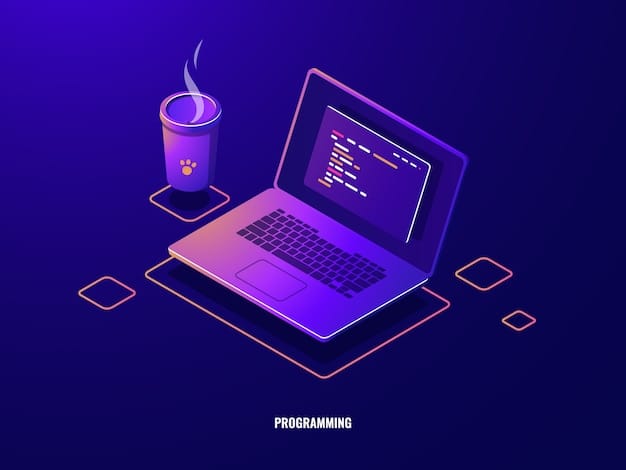
Studies suggest that attention spans have decreased over time due to the increasing use of digital devices in schools. A study by Common Sense Media found that kids in schools aged 8-12 spend nearly 5 hours a day on screens, which can contribute to shorter attention spans.
Lack of focus in online science classes can lead to:
Poor retention of key concepts
Decreased problem-solving skills
Reduced motivation to learn
Lower academic performance
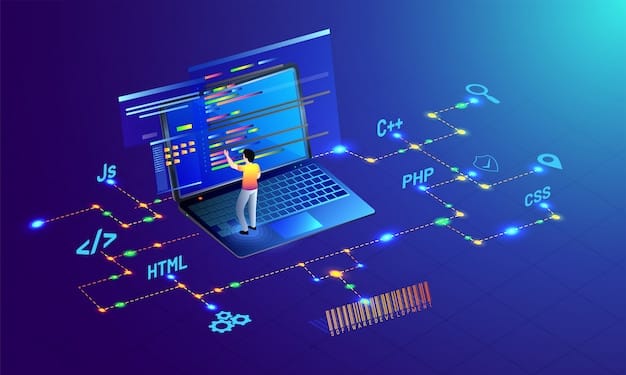
To combat these challenges, here are 15 proven strategies to help kids stay attentive during virtual science lessons. A child's ability to concentrate in an online environment determines how well they grasp fundamental concepts like genetics, anatomy, and psychology. Online coursework often involves advanced courses that require learners to balance multiple subjects, manage assessments, and schedule their studies efficiently. Without the right structure, distractions can hinder knowledge retention and impact long-term education goals. For example, a student interested in biochemistry or mechanics might struggle to understand the periodic table or cell biology without proper engagement strategies. Universities and schools offer structured programs with faculty and instructors guiding students, ensuring they enhance their understanding and complete their courses successfully.
Setting the Foundation for Productive Online Learning
1. Create a Distraction-Free Learning Environment

A quiet, well-organized space enhances focus. Studies from the American Psychological Association show that clutter can increase stress and reduce concentration. Tips for an ideal setup include:
Choosing a quiet study area away from TV and noisy areas
Turning off notifications on devices
Keeping the desk clean and organized with only necessary study materials
2. Set a Consistent Routine
Children thrive on routine because it helps them develop discipline, structure, and a strong foundation in education. When kids have a set schedule for online science classes, they are more likely to stay engaged and complete their online coursework efficiently. Whether they are learning about atomic structure, chemical reactions, or cell biology, a structured approach ensures they absorb the fundamental concepts of science in an organized manner. Parents and educators should focus on maintaining a balance between study, play, and relaxation to enhance critical thinking and long-term knowledge retention.
One way to make online science courses more effective is by using planners, visual schedules, or apps to track progress. These tools allow learners to manage their schedule, set reminders, and complete assessments on time. Many free online courses provide structured syllabi that cover basic concepts and extend into advanced courses in disciplines like biology, physics, and chemistry. For students who want to explore specialized fields, there are programs on thermodynamics, biochemistry, and r programming, helping them gain expertise in high-demand topics. A structured schedule prepares their minds for learning and eliminates procrastination. Try:
Setting a fixed time for science classes every day
Maintaining a balance between study, play, and relaxation
Using visual schedules or planners to track lessons and assignments
3. Establish Clear Goals for Each Session
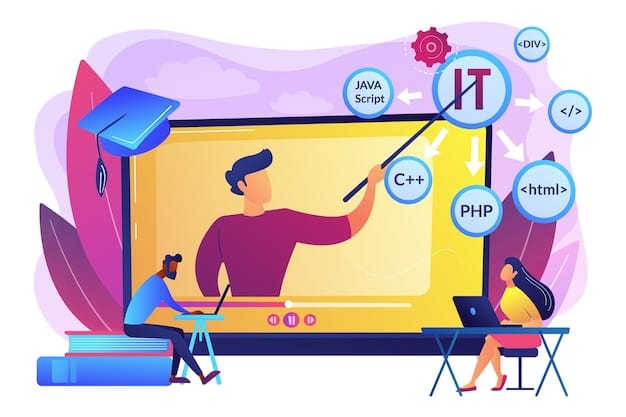
Defining learning objectives makes lessons more purposeful. When kids have a clear understanding of what they need to achieve, they stay more engaged. A well-defined learning goal is essential in science courses. Whether students are studying the periodic table, learning the fundamentals of psychology, or diving into genetics, setting small milestones makes the process more manageable. Many universities and schools offer structured online science courses where instructors and faculty guide students through mechanics, earth sciences, and even research-based topics like anatomy and life sciences.
Students who wish to pursue careers in STEM can benefit from free online courses that offer credit and career guidance. Many college credit and courses also allow learners to simply register and begin learning immediately, making it easier to access high-quality resources and expert support.
Breaking lessons into smaller, achievable goals
Using a checklist for completed topics
Rewarding small milestones with fun activities or treats
Engaging Kids with Science Learning Techniques
4. Incorporate Hands-On Activities
Science is best learned through experience. According to National Training Laboratories, hands-on learning improves retention skills at rates up to 75% compared to traditional lectures. Some engaging activities include:

Making a homemade volcano using baking soda and vinegar
Testing water pH levels with litmus paper
Creating simple circuits with batteries and LED lights
5. Use Interactive Science Tools and Apps
Technology can transform online science learning into an exciting adventure. A study by EdTech Review found that students using STEM-based educational apps scored 23% higher than those using traditional learning methods. Instead of passively absorbing information, kids get to experiment, simulate, explore and discover scientific concepts in action.
For instance, platforms like PhET Interactive Simulations allow kids to explore physics and chemistry experiments virtually—adjusting variables, watching real-time reactions, and understanding complex ideas taught through hands-on engagement. Scratch and Tynker introduce coding with an interactive, science-friendly approach, helping kids build their simulations and games that reinforce STEM principles. Even NASA’s Eyes on the Solar System lets young explorers embark on a virtual journey through space, making astronomy lessons come alive!
These tools not only boost engagement but also cater to different learning styles. Visual learners benefit from interactive animations, kinesthetic learners thrive with hands-on simulations, and auditory learners can absorb concepts through narration systems and guided activities. Plus, many of these apps offer gamified elements—points, badges, and challenges—that keep kids motivated to progress.
Recommended tools:
PhET Simulations – Virtual science experiments
Google Expeditions – Augmented reality (AR) for science exploration
Toca Lab – Fun chemistry experiments for kids

6. Make Science Fun with Experiments
Fun experiments bring theoretical physics concepts to life. Science isn’t just about reading textbooks—it’s about doing! When kids actively participate in hands-on experiments, they transform abstract concepts into real-world discoveries. The best part? Many exciting science experiments require only common household items, making learning accessible and engaging. Whether it's mixing ingredients in the kitchen or growing plants on a windowsill, these experiments create a fun and immersive learning experience that sparks critical thinking and problem-solving skills.
Take photosynthesis, for example. Instead of just memorizing basic concepts about how plants convert sunlight into energy, kids can explore the fundamental concepts through hands-on activities. This real-world application is commonly seen in online science courses, where students apply knowledge through virtual labs, making education interactive and more cost effective.
For those fascinated by chemistry, biology, or physics, science courses can introduce engaging experiments like creating homemade slime to study chemical reactions and polymer chemistry. This activity not only enhances their understanding of molecular bonding but also introduces topics covered in free online college courses related to biochemistry and material science. Many online science classes offer virtual experiments that replicate hands-on activities, allowing learners to explore scientific phenomena from anywhere.
Want to make science explosive (in a safe way)? Try building a mini rocket with baking soda and vinegar to demonstrate thermodynamics, gas expansion, and Newton’s Laws. This is a fantastic way to introduce mechanics in a fun setting.
Whether you're interested in careers in cell biology, genetics, or R programming, there’s an abundance of online resources available. From free introductory programs to demand-driven courses in life sciences, students can pursue their passion with support from expert faculty and instructors. Some easy-to-do experiments include:
Growing plants in different conditions to study photosynthesis
Creating homemade slime to understand polymer chemistry
Building a mini rocket with baking soda and a plastic bottle
Supporting Kids’ Focus with Healthy Habits
7. Encourage Regular Breaks
Short breaks between study sessions prevent mental fatigue. Research from Harvard University shows that 5-minute breaks improve focus and productivity. Encourage:
The Pomodoro technique (25 minutes of study, 5-minute break)
Short walks or stretching exercises between lessons
Screen-free breaks to rest the eyes
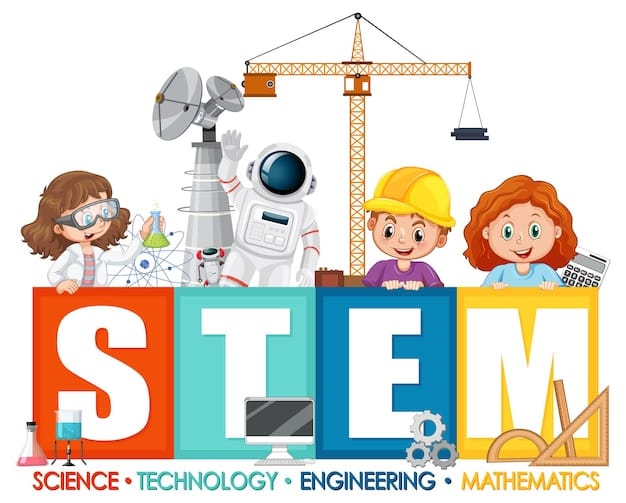
8. Promote Physical Activity Between Sessions
Exercise boosts concentration by increasing oxygen flow to the brain. According to research by the CDC, kids who engage in at least 60 minutes of physical activity daily perform better academically.
Jumping jacks, yoga, or dance breaks can help reset focus.
Nature walks can spark curiosity about science topics like ecosystems.
These mini-exercise sessions help shake off restlessness, improve mood, and re-energize young minds for learning. Plus, they make science courses more interactive and fun! If your child struggles to sit through an entire class, try scheduling short, structured movement breaks—even just five minutes of stretching or deep breathing can improve their ability to absorb fundamental concepts in subjects like biology, physics, and chemistry.
For an extra boost, take learning outdoors! A nature walk isn’t just exercise—it’s a science lesson in disguise! Observing ecosystems can naturally spark curiosity about life sciences, cell biology, and chemical reactions. Connecting movement with learning makes education feel less like a chore and more like an adventure. Whether exploring atomic structures or discussing the periodic table, physical activity can help students grasp basic concepts and advanced topics.
The best part? Many free online courses encourage movement-based learning. From r programming to thermodynamics, schools and universities worldwide offer structured online coursework that integrates hands-on experiences with digital learning.
9. Ensure Kids Are Well-Rested and Hydrated
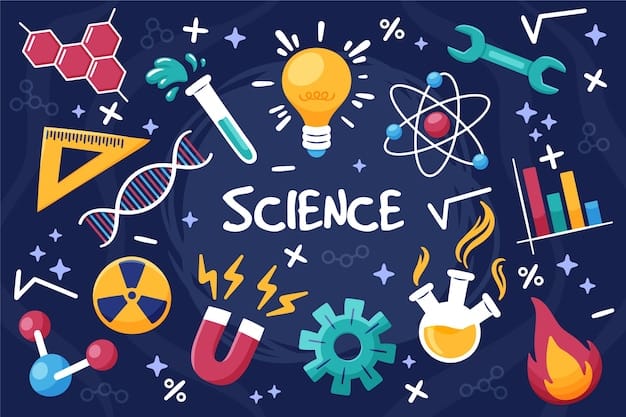
Sleep and hydration are essential for cognitive function. Sleep is when the brain consolidates learning, strengthens neural connections, and clears out toxins that accumulate throughout the day. Without enough rest, children may struggle with attention, problem-solving, and emotional regulation, making it harder to absorb new information—especially in subjects like science, which require critical thinking and curiosity. Just as sleep recharges the brain, hydration fuels it.
The National Sleep Foundation recommends:
9-11 hours of sleep per night for children aged 6-13
Drinking 6-8 glasses of water daily to maintain brain function
Encouraging good sleep and hydration habits is like giving kids a secret superpower for learning. Parents and teachers can help by establishing consistent bedtime routines, limiting screen time before bed, and ensuring water is easily accessible throughout the day. Small changes like these can significantly boost a child’s ability to focus, absorb knowledge, and retain information, ultimately setting them up for academic success. After all, a well-rested and well-hydrated brain is a powerful brain!
Leveraging Parental Involvement and Encouragement
10. Be Present During Key Learning Sessions
Parental support can enhance learning by providing guidance and reassurance. Ways to help include:
Sitting with younger children during lessons
Asking questions to reinforce concepts
Discussing science topics over dinner
11. Offer Positive Reinforcement and Rewards
Encouraging words and rewards keep kids motivated. A study from the Journal of Neuroscience found that dopamine levels increase when students receive rewards, making learning enjoyable.
Create a science achievement chart with stickers for completed lessons.
Use small treats like extra playtime or a favorite snack.

12. Communicate with Teachers for Additional Support
Teachers can provide valuable insights and tailored education resources. Regular check-ins with instructors help:
Identify struggling areas early
Gain access to additional learning materials
Stay updated on progress
Adapting Online Science Learning for Individual Needs
13. Tailor Learning to Their Interests
When kids are taught to relate science to their passions, they stay more engaged. Personalization strategies include:
Teaching astronomy lovers about planets and black holes
Using animal biology for kids interested in wildlife
Introducing chemistry through fun food science experiments
14. Identify and Address Learning Challenges Early
Recognizing learning difficulties early prevents frustration. Signs of struggle may include:
Lack of enthusiasm for lessons
Difficulty remembering concepts
Frequent distractions If challenges arise, consider tutoring, modified lesson plans, or engaging learning methods.
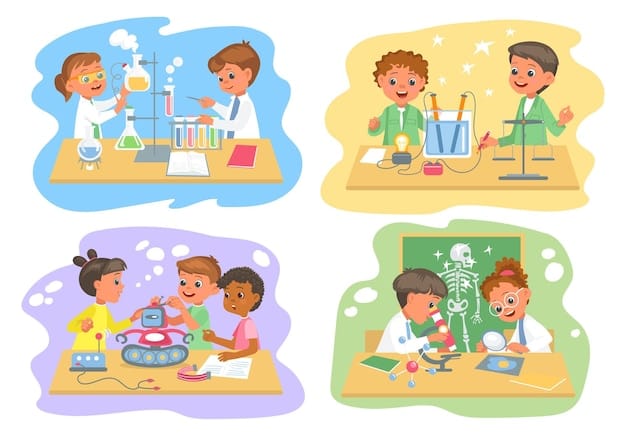
15. Use Visual and Multimedia Resources for Better Engagement
Videos, animations, and infographics make complex topics easier to explore and understand. Helpful platforms include:
Khan Academy – Free science video tutorials
BrainPOP – Animated lessons on various science topics
National Geographic Kids – Interactive articles and games
Conclusion
Keeping kids focused during online science classes is like conducting a perfectly balanced experiment—it requires the right mix of structure, interaction, and creativity. By implementing these 15 strategies, children won’t just sit through their lessons; they’ll actively engage, explore basic concepts, and develop essential critical thinking skills. With hands-on activities, engaging science courses, and a supportive learning environment, kids can pursue their passion for biology, physics, chemistry, and life sciences while building expertise in essential fundamental concepts.
Online Science Classes - FAQs
What are the best ways to create a focus-friendly environment for online science classes?
Think of it as setting up a mini science lab! A quiet, well-lit space free from distractions, combined with a structured schedule, enhances concentration. Using online coursework, interactive tools, and guidance from experienced faculty can also enrich the learning process. Simply register for well-structured online science courses to give students an engaging experience.
What is the role of hands-on experiments in science online learning?
Science isn’t just about reading theories—it’s about experiencing them! Hands-on experiments help students discover real-world applications of chemical reactions, atomic structure, and genetics. Whether exploring biochemistry or understanding the periodic table, these activities strengthen fundamental concepts and make learning more engaging.
How do the best science classes maintain student interest virtually?
The best online science courses use engaging content, virtual labs, and interactive simulations to make learning exciting. Whether studying cell biology, the mechanics of thermodynamics, or the complexities of R programming, students get a hands-on, engaging experience that enhances their understanding of different disciplines.
How do scheduled breaks impact a child’s focus in online science classes?
Even the most curious minds need a break! Short pauses help reduce fatigue and refresh students, allowing them to return to their courses with better focus. A well-planned education schedule that balances active learning with rest ensures that learners can effectively absorb knowledge about earth sciences, psychology, and physics.
What are the benefits of using goal-setting in online science classes?
Setting clear learning objectives helps students stay motivated. Whether they aim to grasp mechanics, complete an introduction to chemistry, or master college-leveladvanced courses, structured goal-setting improves focus. It also prepares them for future careers by developing essential skills in science, research, and programming.
What are the common challenges of online class for science students and how can they be addressed?
Students may face distractions, lack of hands-on learning, and screen fatigue. A structured process, engaging programs, and strong support from instructors can address these challenges. Additionally, using resources like virtual experiments, guided assessments, and real-world case studies in life sciences can significantly enhance learning.
How can parents ensure a balance between learning and play during home learning?
Encouraging outdoor play, movement breaks, and interactive science courses help maintain a healthy balance. Fun activities like building models of the periodic table, performing simple biochemistry experiments, or solving puzzles on earth sciences make learning feel like an adventure.
Comments
Your comment has been submitted successfully!